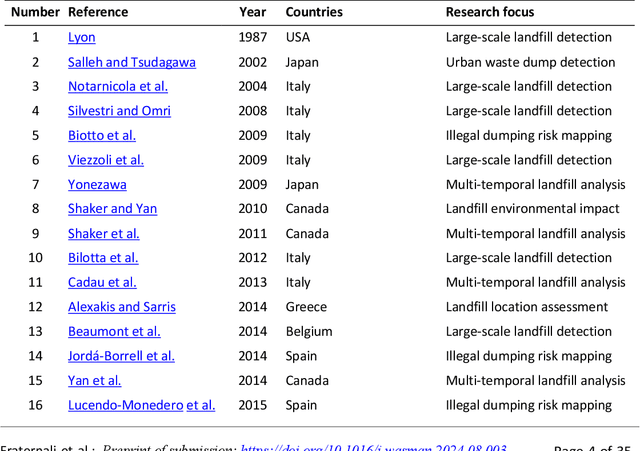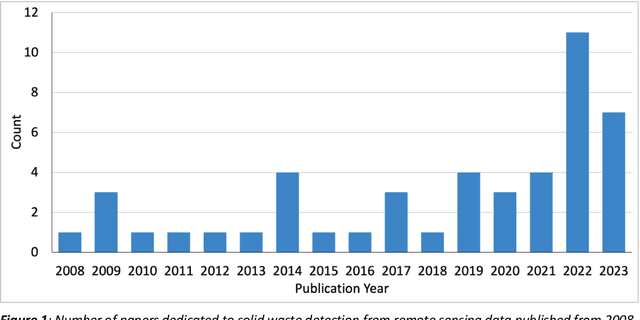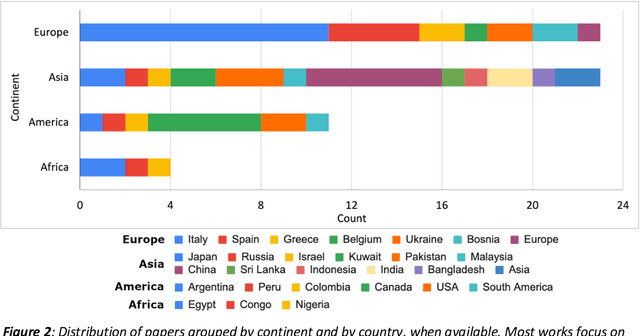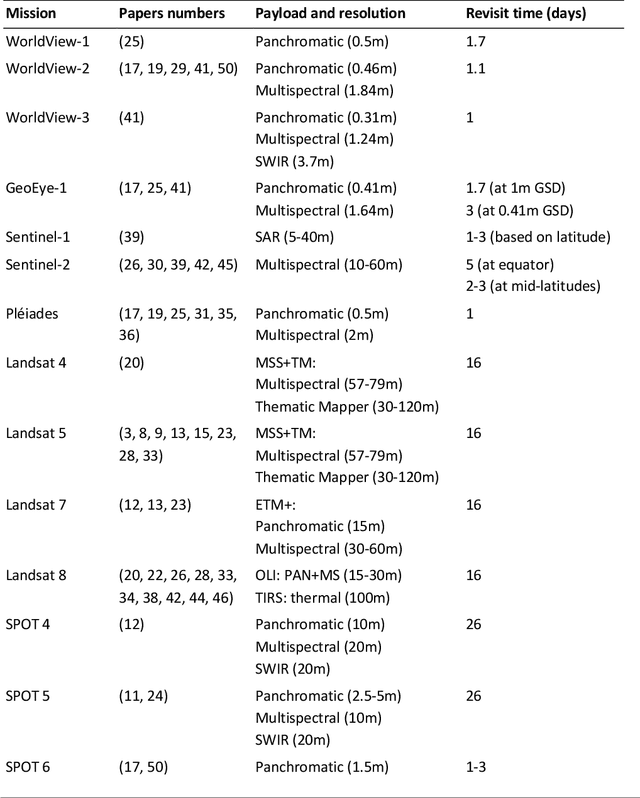Solid Waste Detection in Remote Sensing Images: A Survey
Paper and Code
Feb 14, 2024



The detection and characterization of illegal solid waste disposal sites are essential for environmental protection, particularly for mitigating pollution and health hazards. Improperly managed landfills contaminate soil and groundwater via rainwater infiltration, posing threats to both animals and humans. Traditional landfill identification approaches, such as on-site inspections, are time-consuming and expensive. Remote sensing is a cost-effective solution for the identification and monitoring of solid waste disposal sites that enables broad coverage and repeated acquisitions over time. Earth Observation (EO) satellites, equipped with an array of sensors and imaging capabilities, have been providing high-resolution data for several decades. Researchers proposed specialized techniques that leverage remote sensing imagery to perform a range of tasks such as waste site detection, dumping site monitoring, and assessment of suitable locations for new landfills. This review aims to provide a detailed illustration of the most relevant proposals for the detection and monitoring of solid waste sites by describing and comparing the approaches, the implemented techniques, and the employed data. Furthermore, since the data sources are of the utmost importance for developing an effective solid waste detection model, a comprehensive overview of the satellites and publicly available data sets is presented. Finally, this paper identifies the open issues in the state-of-the-art and discusses the relevant research directions for reducing the costs and improving the effectiveness of novel solid waste detection methods.
 Add to Chrome
Add to Chrome Add to Firefox
Add to Firefox Add to Edge
Add to Edge